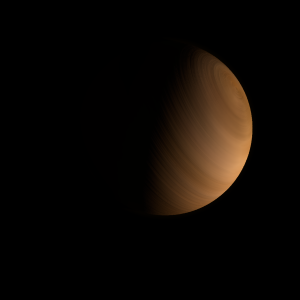|
|
Space Astro
|
Info for exoplanet "Ovim-etaz"
| Scientific (actual) data |
|---|
| Name | TOI-1723 b |
| Planet status | Confirmed |
| Planet mass | 0.0327 |
| Radius | 0.27 |
| Orbital period | 13.7264 |
| Semi major axis | 0.114 |
| Orbit eccentricity | 0 |
| Discovered | 2024 |
| Updated | 2025-05-17 |
| Tzero tr | 2458850 |
| K | 2.7 |
| Publication | Published in a refereed paper |
| Detection type | Primary Transit |
| Mass measurement type | Radial Velocity |
| Radius measurement type | Primary Transit |
| Star name | TOI-1723 |
| Right ascension | 116.8° |
| Declination | 68.48° |
| Star distance | 100.727 |
| Star mass | 1.03 |
| Star radius | 1.09 |
| Wikipedia article | TOI-1723 b |
Back
| |
| Fictional info (?) |
|---|
| Suggested name | Ovim-etaz |
| Planet type | Small cold gas planet |
| It may have had hydrogen deuteride (HD) oceans in the past, but these would have vaporized as the temperature rose due to a runaway greenhouse effect.
It was the one of the first exoplanets visited by a spacecraft, and one of the first to be successfully landed on.
The volume of water detected has been estimated to be equivalent to the volume of water in the Black Sea. |
| Atmosphere | Hydrogen chloride | 74% |
| Sulfur dioxide | 24% |
| Hydrogen deuteride (HD) | 1.3% |
| Hydrogen | 0.023% |
| Atmospheric pressure | 5 bar |
 |
| No known satellites |
| Google search for Ovim-etaz |
|
Website by Joachim Michaelis
|
|
|
|